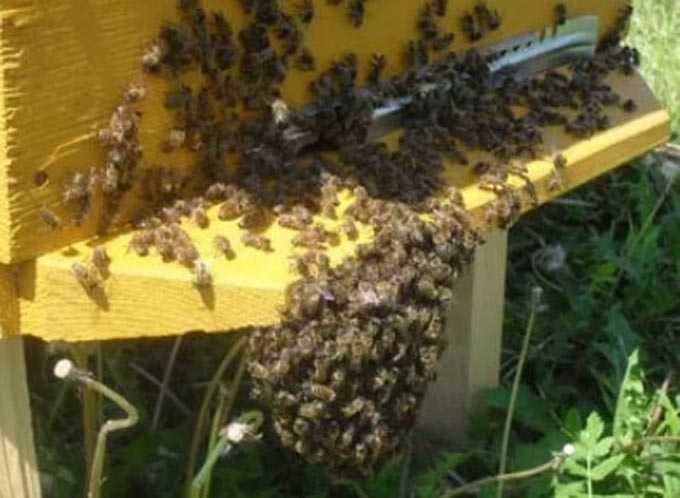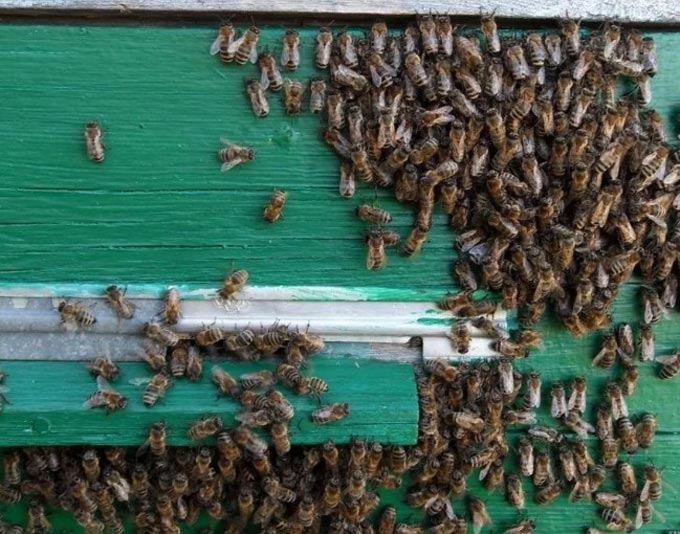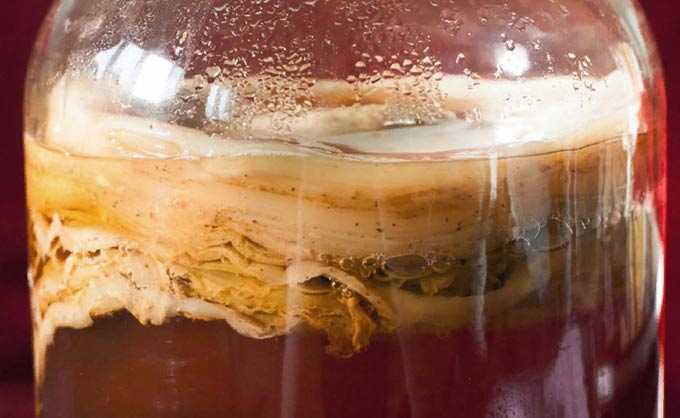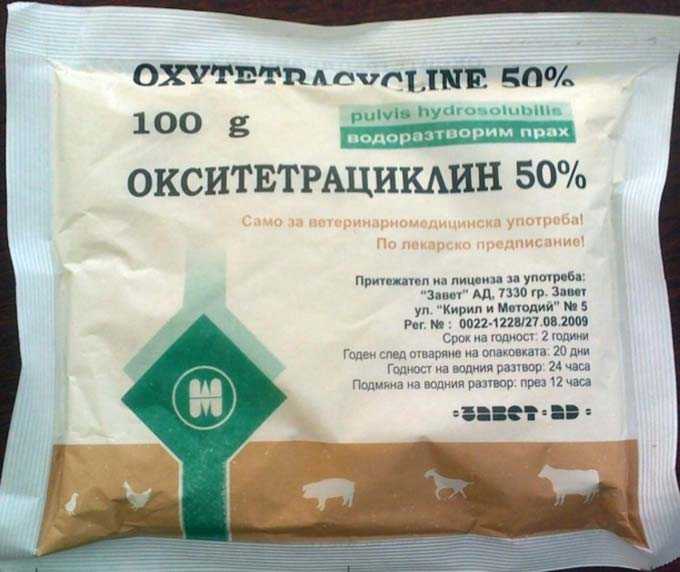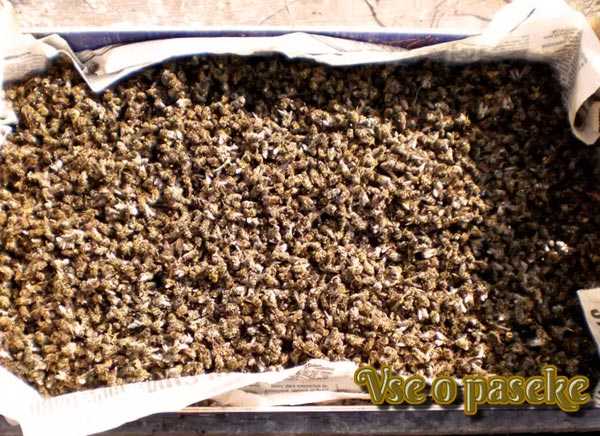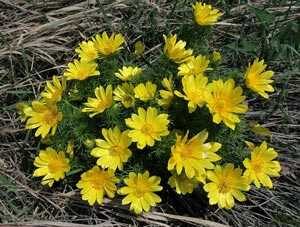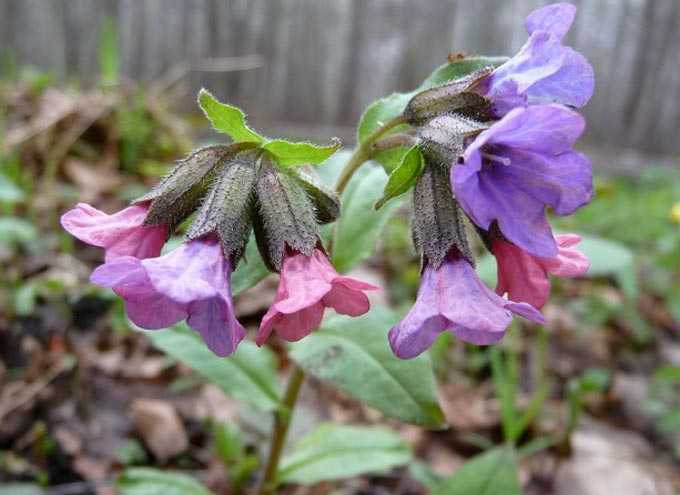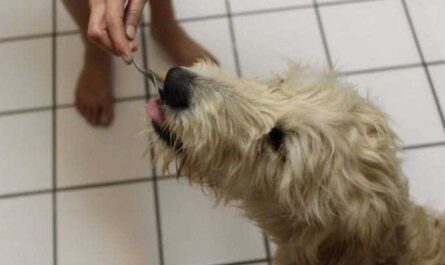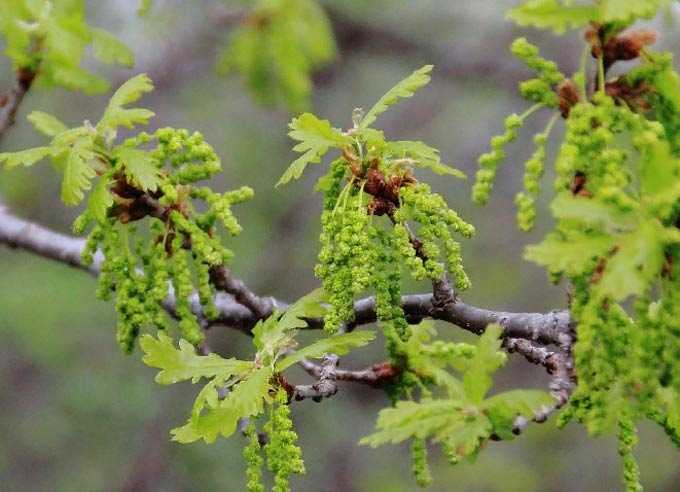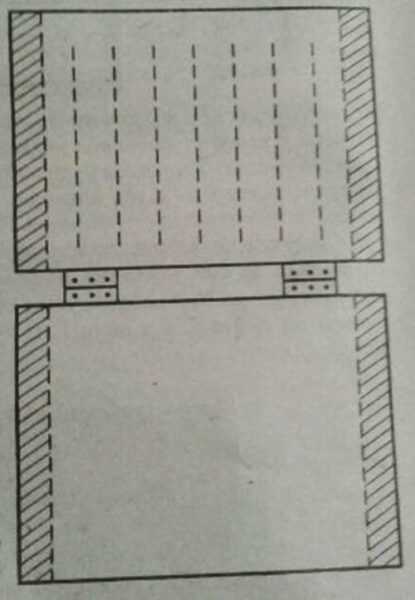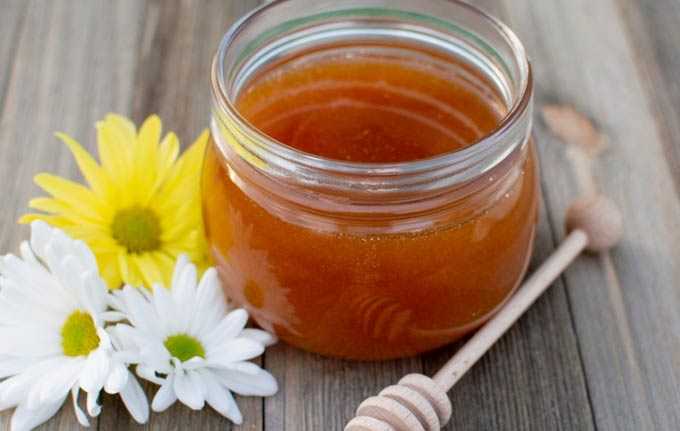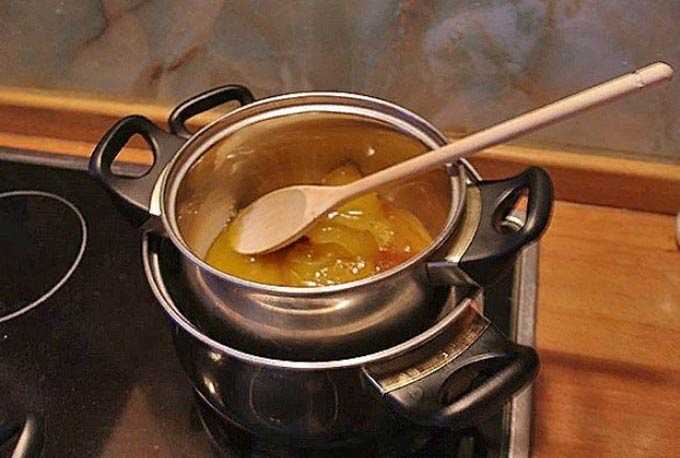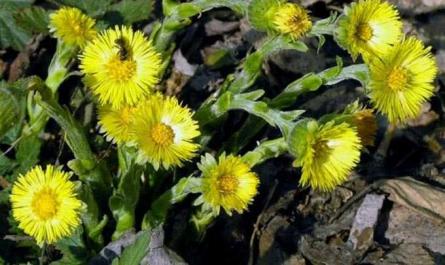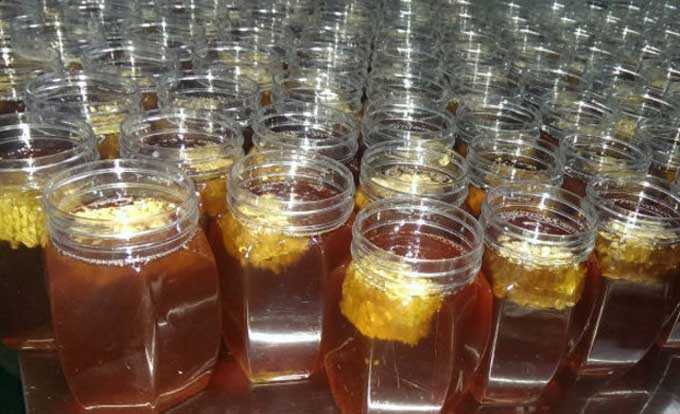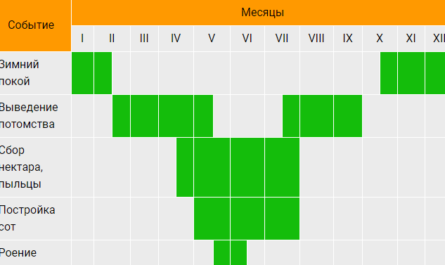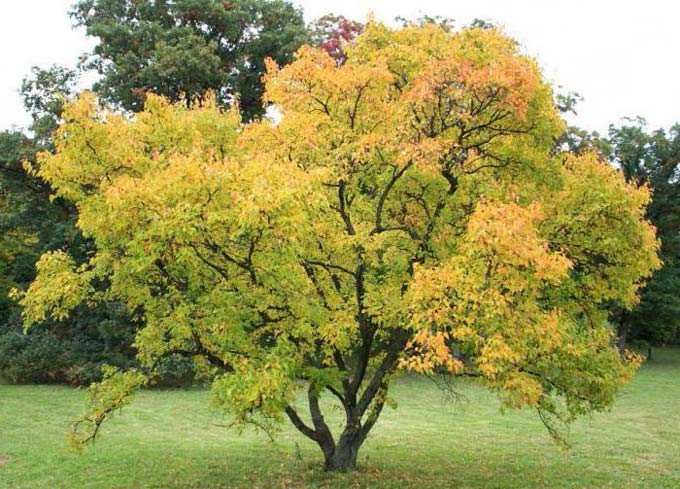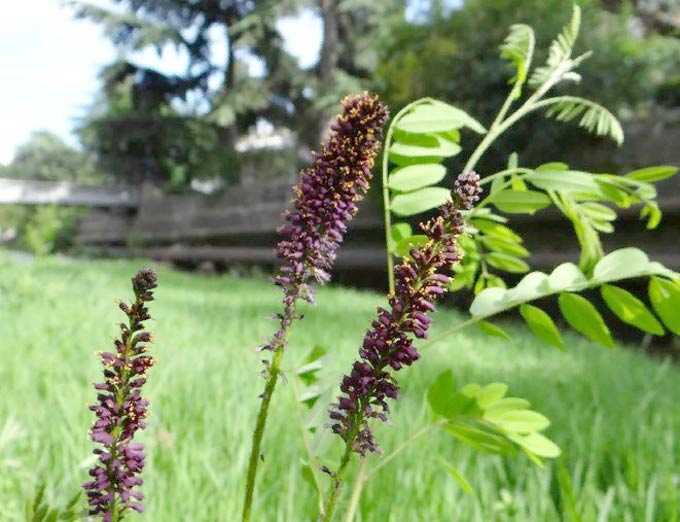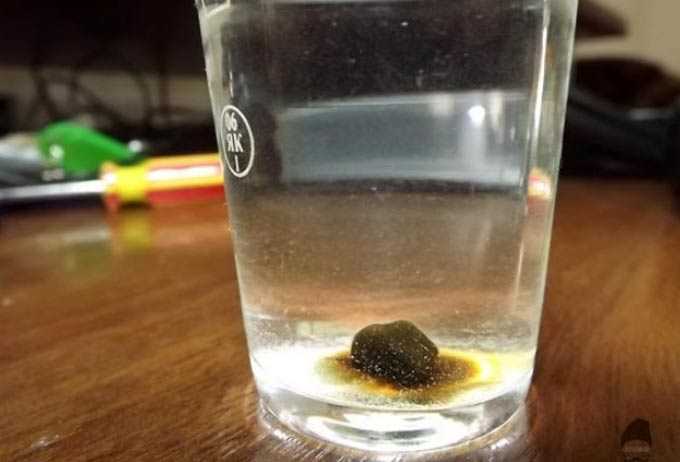Every summer, an experienced beekeeper every day, at every opportunity, carefully casts a glance at his charges in order to determine the state of his pets’ families by the fly, hum, buzz and other signs.
And in hot weather it is often possible to notice such an unhealthy phenomenon as fatigue, when bees sit on the front wall of the hive or even hang out with a “beard” under the taphole. Regardless of the reasons, this state of the families is abnormal, since the bees go astray from the working rhythm and the beekeeper suffers losses in the amount of brought marketable honey.
The content of the article
- 1 Main reasons
- 2 What do we have to do
- 2.1 Temperature normalization
- 2.2 Elimination of crowding
Main reasons
Having seen such a state of families, it is necessary to establish the reason for this behavior and find out why the bees hang with their beards on the hive?
If we exclude the very rare anomalous and unexplained cases described in some beekeeping forums (when, for no apparent reason, families enter and leave this state themselves), there are three main reasons:
- awakening of the swarm instinct,
- temperature rise in the nest dangerous for brood,
- tightness in the hive, most often due to an oversight on the part of the apiary owner.
What do we have to do
First of all, it is necessary to check the family for the presence of a swarm state.
In the photo there is a pre-combat state:
If a strong family, with a normal bribe, almost does not fly for honey, is in an agitated state, the bees gnaw the fly, do not want to build foundation, it is necessary to carry out anti-combative measures.
To read:
How to deal with swarming in an apiary
Or, if necessary, try to calculate the date of the swarm’s release, so as not to miss the opportunity to increase the apiary at the expense of a new family.
Temperature normalization
If there are no signs of swarming, the fastest way is that it is the violation of the temperature regime in the hive that is the cause of the weeping.
Bees warm the brood with the heat of their bodies, maintaining the air temperature near the brood frames at 34-35 degrees. When the temperature rises to 38 degrees, the brood dies, and at 40 or more, the whole family can die.
If, due to a sharp increase in air temperature outside the hive or lack of ventilation, the temperature in the nest begins to rise, the bees are simply forced to leave the hive and hang out with their beard. Then the heat of their bodies goes into the atmosphere. At the same time, insects intensively ventilate the hive with the work of their wings, standing on the fly, in order to increase heat exchange with an additional air flow and remove excess heat from the hive through the upper ventilation holes.
This situation is unacceptable for the beekeeper, since bees at this time do not work on a bribe, do not bring nectar and pollen to the hive! In addition, the very violation of the thermal regime and stuffiness can cause swarming of the family.
Therefore, the beekeeper is required to eliminate external harmful factors:
- open all possible entrances to improve ventilation;
- and keep the hives out of direct sunlight.
If the apiary was not originally located in the shade of trees, then it is necessary to apply artificial shading, or at least paint the covers of the hives white, cover them with freshly cut grass, install foam sheets instead of ceilings, etc.
In general, do everything to make it easier for the bees to carry out normal heat exchange in the hives. Usually, when there is a slight cold snap, the boring stops and the families return to normal working mode.
To read:
The importance of ventilating the hives
Elimination of crowding
The last reason for the bees’ weeding out is the tightness of the nest.
Main reasons:
- The beekeeper did not have time to expand the nest with honeycomb or dry land in time – the developed bee colony took up all the free frames and there is not enough space in the nest for “extra” family members.
- The bribe was too intense – all honeycomb cells free from brood had already been filled with honey, the queen had nowhere to sow, and the flight bee had no work. Some of the bees have left the hive, and hang with their beard from idleness.
So that there is no loss of marketable honey, the beekeeper needs to examine the family and, if crowdedness is found, urgently eliminate it:
- pump out honey;
- expand the nest, and best of all with foundation against the brood, which in itself is an effective counter-fighting measure.
If the hive is multi-hull, you can add a hive or store with foundation. It is better to put it at the very bottom under the nest to improve ventilation, and so that the bees from the “beard” immediately go to rebuild the honeycomb.
